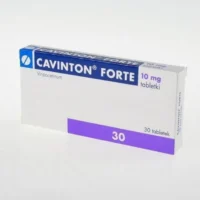Description
Zolmigren (Zolmitriptan) Coated Tablets 2.5 mg. №2
Ingredients
- Active ingredient: Zolmitriptan 2.5 mg
- Other ingredients: lactose monohydrate, microcrystalline cellulose, croscarmellose sodium, magnesium stearate, hypromellose, titanium dioxide, triacetin
Dosage
Dosage: The usual dose is 2.5 mg taken as soon as migraine symptoms appear. A second dose may be taken after 2 hours if needed. Maximum dose: 10 mg in 24 hours.
Indications
Indications: Zolmigren is indicated for the acute treatment of migraine attacks with or without aura in adults.
Contraindications
Contraindications: Do not use Zolmigren if you have uncontrolled hypertension, ischemic heart disease, history of stroke or transient ischemic attack, peripheral vascular disease, or severe hepatic impairment.
Directions
Directions: Swallow the tablet whole with water. Do not crush, chew, or break the tablet. It can be taken with or without food.
Scientific Evidence
Zolmitriptan, the active ingredient in Zolmigren, is a selective serotonin receptor agonist that acts on the 5-HT1B/1D receptors in the brain. Clinical trials have shown that zolmitriptan is effective in relieving migraine symptoms, including pain, nausea, and sensitivity to light and sound.
Additional Information
Zolmigren coated tablets have been shown to provide rapid relief from migraine attacks, with many patients experiencing significant improvement within 2 hours of taking the medication. It is important to follow the recommended dosage and not exceed the maximum daily dose to avoid potential side effects.
- Zolmitriptan’s pharmacological action involves vasoconstriction of dilated cranial blood vessels and inhibition of pro-inflammatory neuropeptide release, contributing to migraine symptom relief.
- Compared to other triptans, zolmitriptan has shown similar efficacy but may have a faster onset of action in some individuals, making it a valuable option for acute migraine management.





